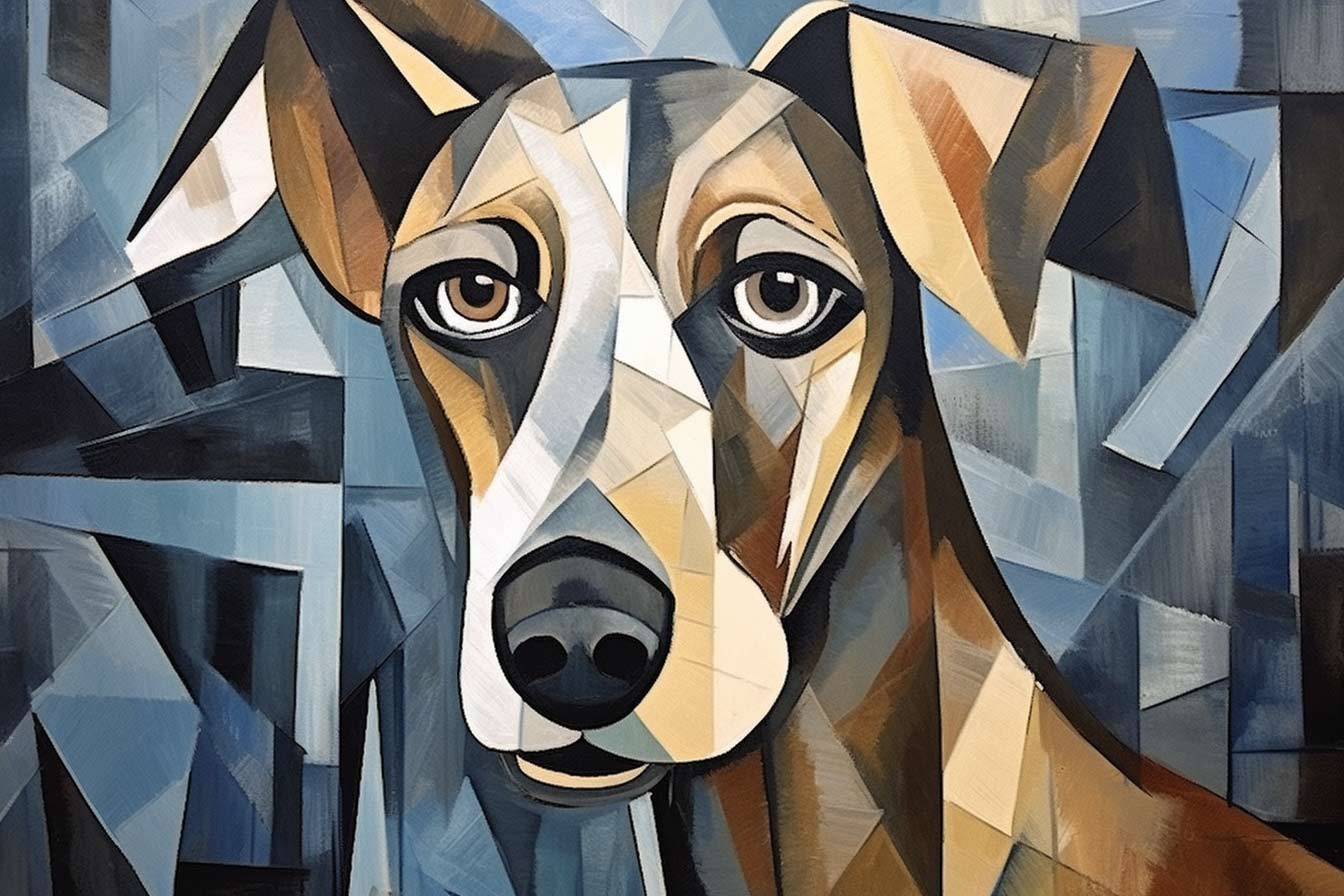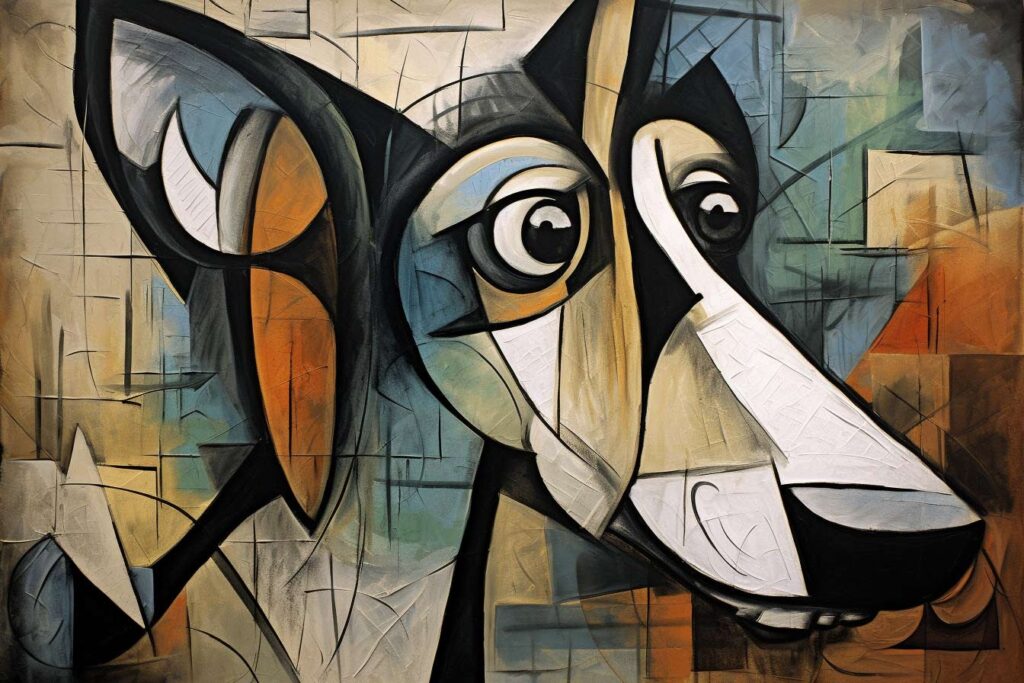A Journey Beyond Sight
In the vast realm of art, we occasionally stumble upon forms and styles that redefine our perception of reality. Cubism, envisioned by the ingenious Georges Braque, does just that—it fractures the world we know, only to rebuild it in a mosaic of multifaceted truths. In this endeavor, let us embark on a novel quest, transforming man’s loyal companion, the dog, through the prism of Cubism into a symphony of shapes and stories.
Analytical Cubism: Probing the Essence
Braque’s earlier foray into Cubism, termed as Analytical Cubism, seeks to understand the soul of the subject through geometric abstraction. It is a deep dive, an investigation that peels back the layers of visual perception.
Step One: Observing and Drafting
First, rest your eyes upon your canine muse. Look beyond the fur and the fidelity. Sketch its form using elemental shapes—rectangles, triangles, and circles. This is not about capturing a dog’s physicality but its spirit, distilled into its simplest geometric essence.
Step Two: Fragmentation of Form
With your foundational sketch in place, fracture this form further. Think of this as reimagining the dog as a puzzle of shapes. Its wagging tail, a series of angular lines; its playful eyes, a couple of intersecting circles.
Step Three: The Dance of Perspectives
Unlike traditional renditions confined to a single vantage point, Analytical Cubism empowers you to showcase the dog from myriad angles, all within one frame. A snout might project from both a frontal and a profile perspective, intertwining seamlessly and offering a richer narrative.
Synthetic Cubism: Crafting a New Reality
As we transition to Synthetic Cubism, we are no longer just deconstructing but actively constructing using a medley of materials and forms. It’s about amalgamation, about harmoniously merging diverse elements into a cohesive ensemble.
Step One: The Canvas of Colors
Initiate your piece by crafting a mosaic of colors. This is the stage upon which your canine protagonist shall be set. While vibrant shades might capture the vivacity of a puppy, somber tones could convey the wisdom of an older hound.
Step Two: Embracing Mixed Media
Braque’s Synthetic Cubism celebrated diversity in materials. Perhaps a fragment of a newspaper can morph into a dog’s ear, or snippets of textured fabric could depict its varied coat. This technique introduces layers of depth and narrative to your masterpiece.
Step Three: Assembling the Abstract
With your fragmented forms and varied materials at hand, arrange them in harmony. While each shard holds its unique story, when coalesced, they should unequivocally pronounce their subject— the dog. The beauty lies in the cohesive chaos, where every piece finds its place in the grand mosaic.
Conclusion: Breathing Life into Shapes
By immersing oneself in the doctrines of Analytical and Synthetic Cubism, one doesn’t merely paint but breathes life into abstract forms. A dog, often seen as a beacon of unwavering loyalty, is now also an emblem of artistic innovation. Through your brushstrokes and vision, you have birthed a universe where geometry meets soul, and tradition waltzes with avant-garde.

All the works of art you see on this site have been created using artificial intelligence algorithms, capturing the essence and techniques of the great masters of Cubism.
